Welcome to the world of animals that start with J! Just by looking out of your window you might encounter a few and on that note, here is our list of just a few of the many animals that start with J.
Read the entire article or jump to any animal.
Overview of Animals That Start With J
1. Jacana
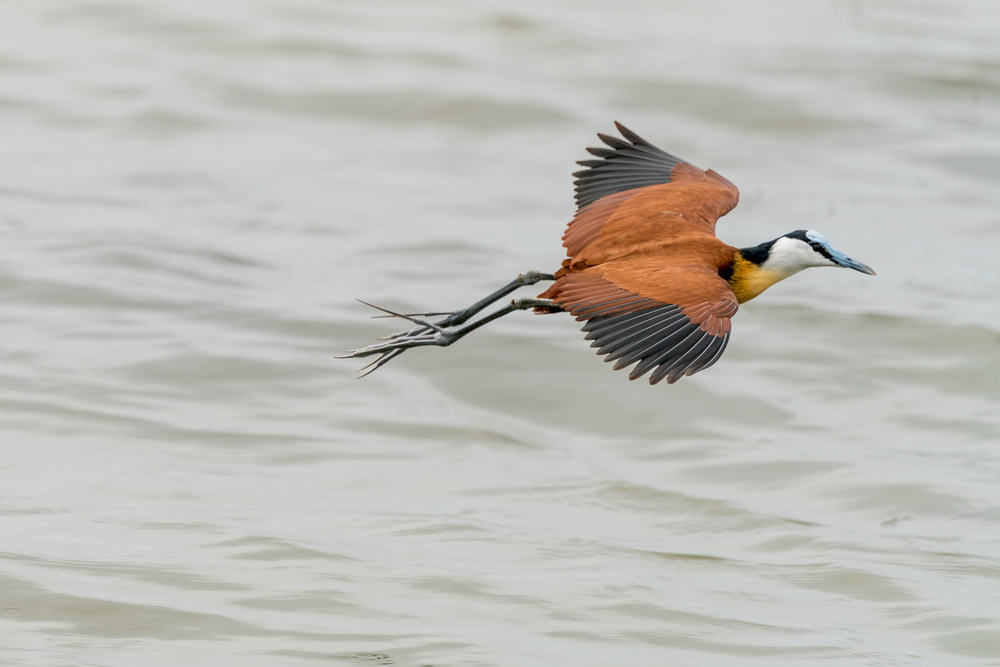
| Scientific Name | Jacana Brisson |
| Where It Lives | Africa, Asia, Central America, North America, South America, Oceania |
| What It Eats | Insects, fish, crabs snails, worms, |
| Conservation Status | Least Concern (LC) according to the IUCN Red List |
Fun Fact: Some Jacanas can swim underwater.
Jacanas live in tropical wetlands near shallow waters like swamps, marshes, and lagoons across the world.
These colorful birds have long legs allowing them to comfortably wade in water while foraging for food. With their water abilities, these birds can hide underwater from predators for long periods at a time, with only their beaks peeking out!
2. Jackal
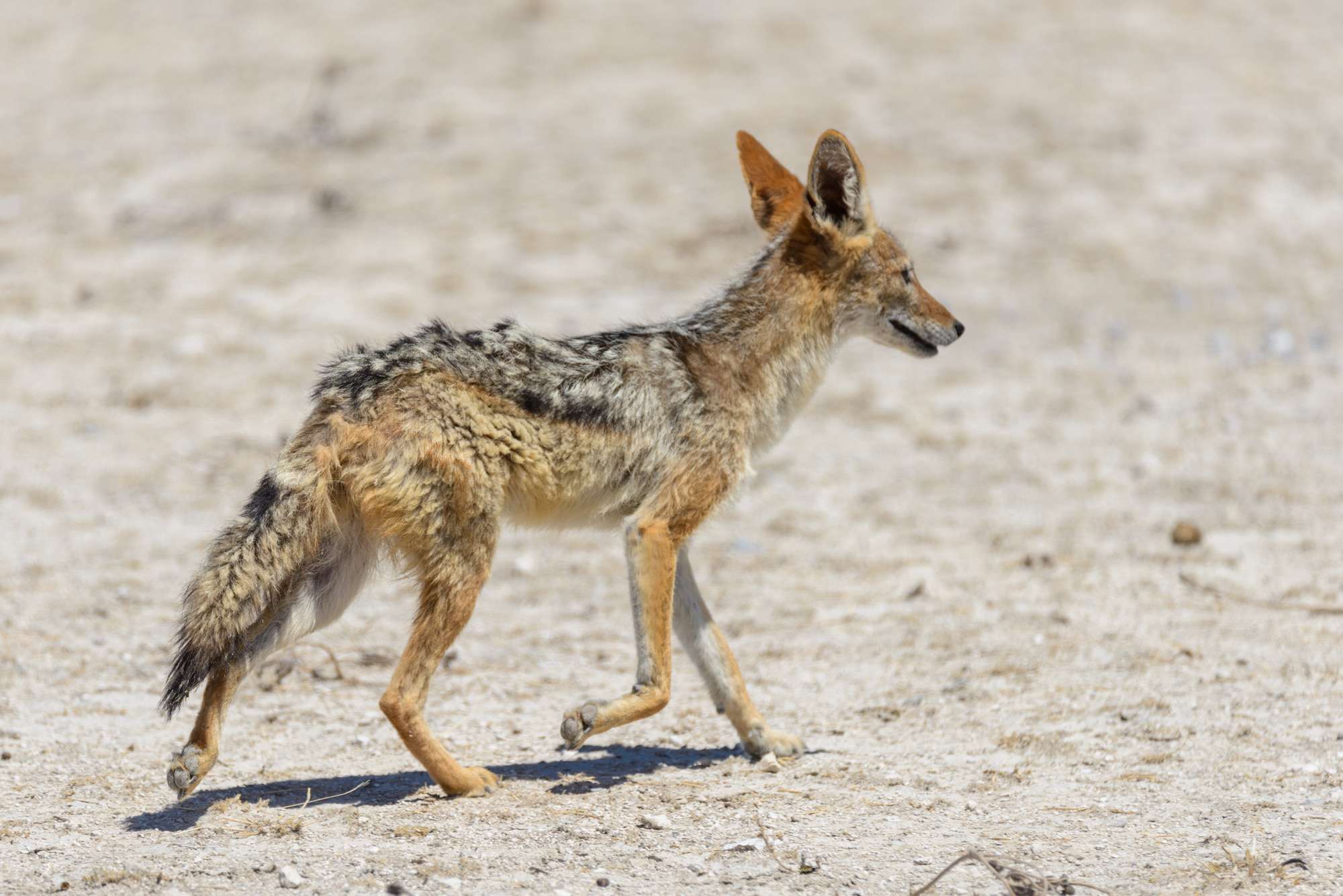
| Scientific Name | Canis Aureus |
| Where It Lives | Asia, Africa, Europe |
| What It Eats | Antelope, reptile, insects |
| Conservation Status | Least Concern (LC) according to the IUCN Red List |
Fun Fact: Jackals can run very fast, with a top speed of 40 miles per hour.
The feisty Jackal lives in open plains and woodland areas in Africa, Asia, and Europe.
Jackals hunt in pairs instead of alone, increasing their success rate when attacking prey larger than them! These omnivorous animals are monogamous. This means that Jackals mate one partner and stay with them, taking care of pups throughout their lives.
3. Jackdaw

| Scientific Name | Coloeus |
| Where It Lives | Asia, Europe, Northern Africa |
| What It Eats | Seeds, insects, fruits, spiders, carrion, eggs |
| Conservation Status | Least Concern (LC) according to the IUCN Red List |
Fun Fact: The Jackdaw is intelligent and can be taught tricks. It can also mimic human voices.
The Jackdaw bird lives in urban areas, farmlands, and woodlands in Asia, Europe, and North Africa.
Their stunning black coat changes to a more grey color as they age, much like human hair. They also undergo yearly molting seasons, where they replace their plumage. These birds are often characterized as thieves in stories, as they have a huge love for all things shiny.
4. Jackrabbit
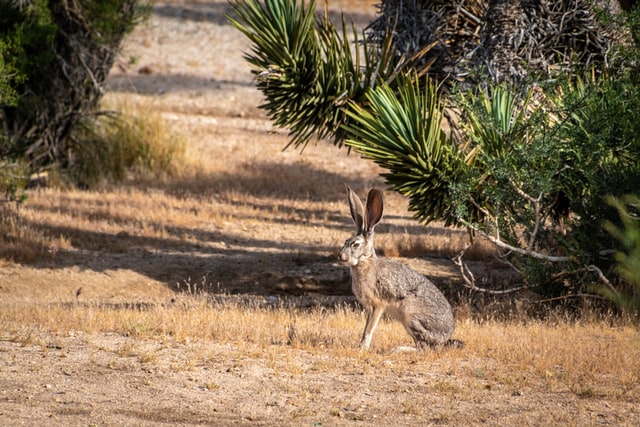
| Scientific Name | Lepus californicus |
| Where It Lives | North and Central America |
| What It Eats | Grass, bark, twigs |
| Conservation Status | Least Concern (LC) according to the IUCN Red List |
Fun Fact: The Jackrabbit can cover ten feet in one leap.
The Jackrabbit is a hare found in grasslands, deserts, and savanna areas in North and Central America.
Their muted grey-brown hues enable them to camouflage seamlessly with their environment. Their long strong legs allow them to reach speeds of 40 miles per hour, and they dodge their predators by running in zig-zag patterns.
5. Jackson’s Chameleon
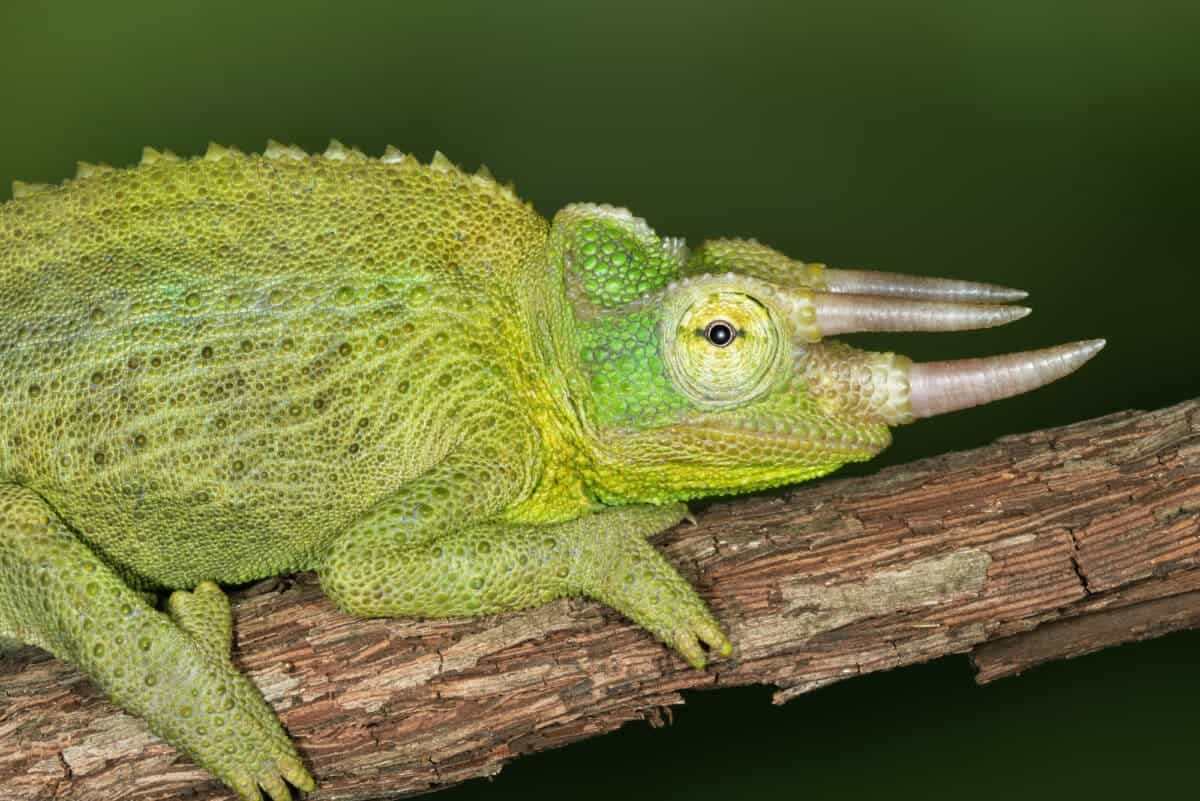
| Scientific Name | Trioceros jacksonii |
| Where It Lives | Sub-Saharan Africa |
| What It Eats | Insects, slugs, caterpillars, spiders, lizards, small birds |
| Conservation Status | Least Concern (LC) according to the IUCN Red List |
Fun Fact: The eggs of the Jackson’s Chameleon hatch in the mother’s body, and the offspring are born live.
The Jackson’s Chameleon, famous for the three horns on its face, lives in tropical forests with plenty of trees available, in Eastern Africa.
These chameleons live solitary lives even though their only defense mechanism is their ability to camouflage. But that is not the only reason they need to change color, they do so based on their mood, the temperature, and their health status.
6. Jaguar
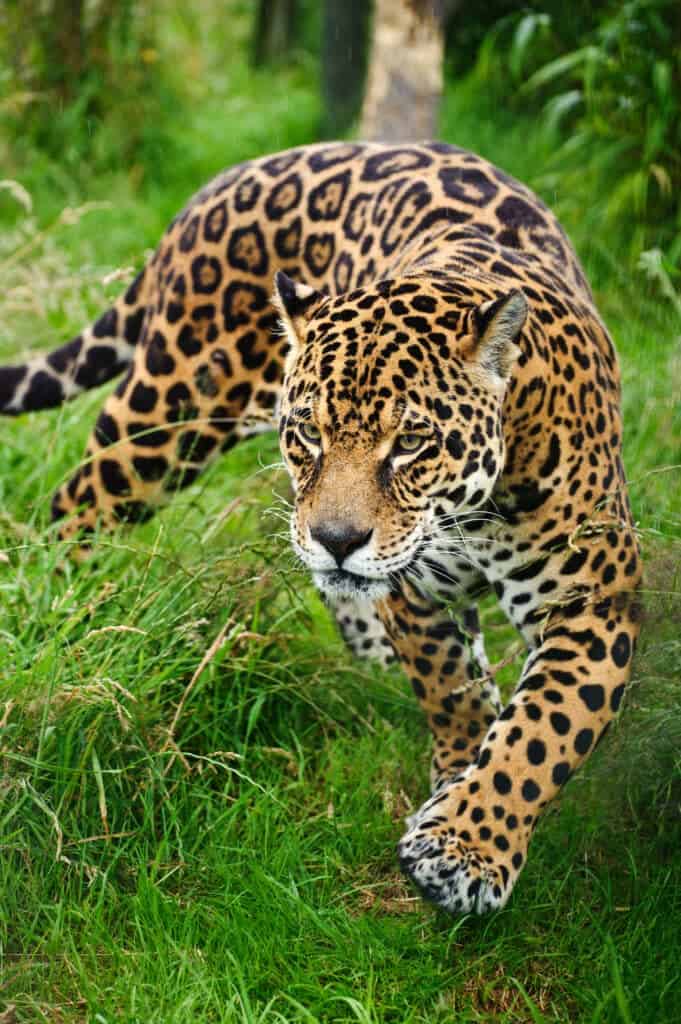
| Scientific Name | Panthera onca |
| Where It Lives | Central America |
| What It Eats | Medium-sized mammals |
| Conservation Status | Near Threatened (NT) according to the IUCN Red List |
Fun Fact: The Jaguar has the most powerful bite of all the big cats.
The Jaguar loves to live in thick, moist tropical forests in Central America. They love water and are great swimmers, so there is always a water source close to their habitat.
These felines use a stalk and ambush method of hunting, and when they pounce they bite directly into their prey’s head to kill them quickly. Known for their incredible agility, these solitary creatures can even dive into water to catch their prey.
7. Jaguarundi Cat

| Scientific Name | Puma yagouaroundi |
| Where It Lives | North, South and Central America |
| What It Eats | Small mammals, rodents, lizards, birds |
| Conservation Status | Least Concern (LC) according to the IUCN Red List |
Fun Fact: This cat can leap 6.5 feet into the air to snatch a flying bird.
The Jaguarundi Cat lives in rainforests, thickest, swamps, savannas, marshes, wetlands, and semi-arid regions across North, South, and Central America.
These secretive cats are not nocturnal like many other wild cats and spend most of their time on the ground hunting and their evenings resting in trees. Jaguarundi cats love water and are excellent swimmers, and can often be seen crossing bodies of water.
8. Japanese Beetle
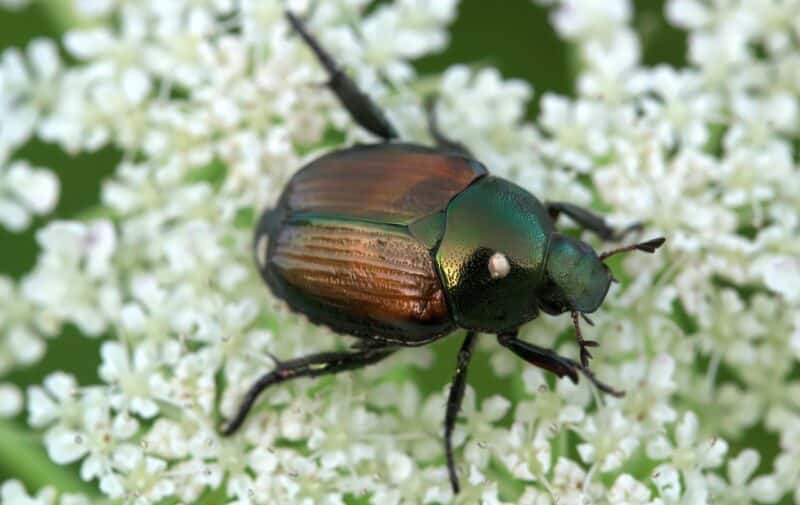
| Scientific Name | Popillia japonica |
| Where It Lives | Asia, North America, Europe |
| What It Eats | Larvae, grubs, fruits |
| Conservation Status | Least Concern (LC) according to the IUCN Red List |
Fun Fact: A swarm of Japanese beetles can clear an entire fruit tree in fifteen minutes.
The Japanese Beetle is native to Japan but has invaded the United States, Canada, and Sweden.
These voracious eaters can cause immense damage to crops. Luckily for farmers, they do not have long lifespans, however, a single female can lay up to 60 eggs during her life. These tiny eggs are shaped in circles and translucent.
9. Japanese Macaque
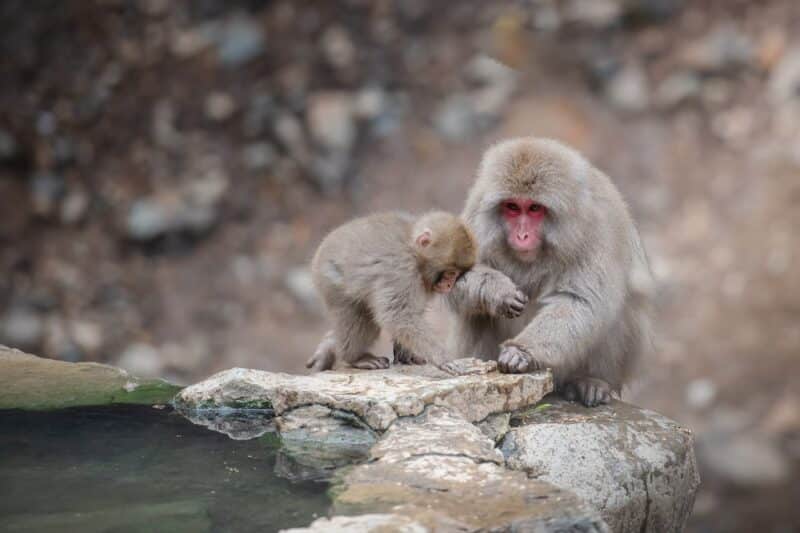
| Scientific Name | Macaca fuscata |
| Where It Lives | Japan |
| What It Eats | Small animals, plants, fruits, berries, leaves |
| Conservation Status | Least Concern (LC) according to the IUCN Red List |
Fun Fact: Japanese macaques are ground-dwelling. They forage food on the ground and store it in their cheek pouches.
The Japanese macaque, often referred to as the Snow Monkey lives in both warm and cool temperature forests in Japan.
These primates are well adapted to cold climates with their dense fur coats and their habit of sleeping in tall trees to avoid snow covering them. Not only do these monkeys have faces similar to humans, but they also wash their food before consuming it!
10. Japanese Squirrel
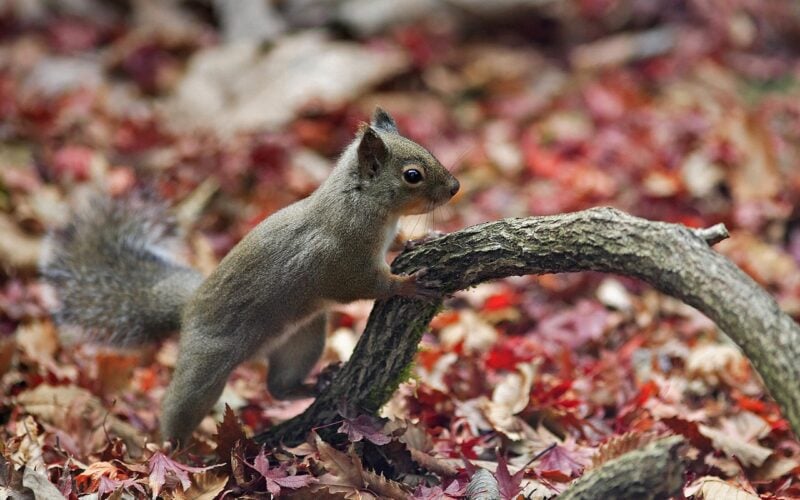
| Scientific Name | Sciurus lis |
| Where It Lives | Japan |
| What It Eats | Leaves, flowers, seeds, nuts |
| Conservation Status | Least Concern (LC) according to the IUCN Red List |
Fun Fact: Japanese Squirrels have a great memory to remember the locations of food they stash for the winter.
Japanese squirrels are as their names suggest, native to Japan. Here they live in forests ranging from lowland forests to pine forests.
They look like any other squirrel, with a long bushy tail, black eyes, and large tufted ears. They normally grow to between 6 to 8.5 inches, but their tails add almost another 7 inches!
11. Javan Rhinoceros
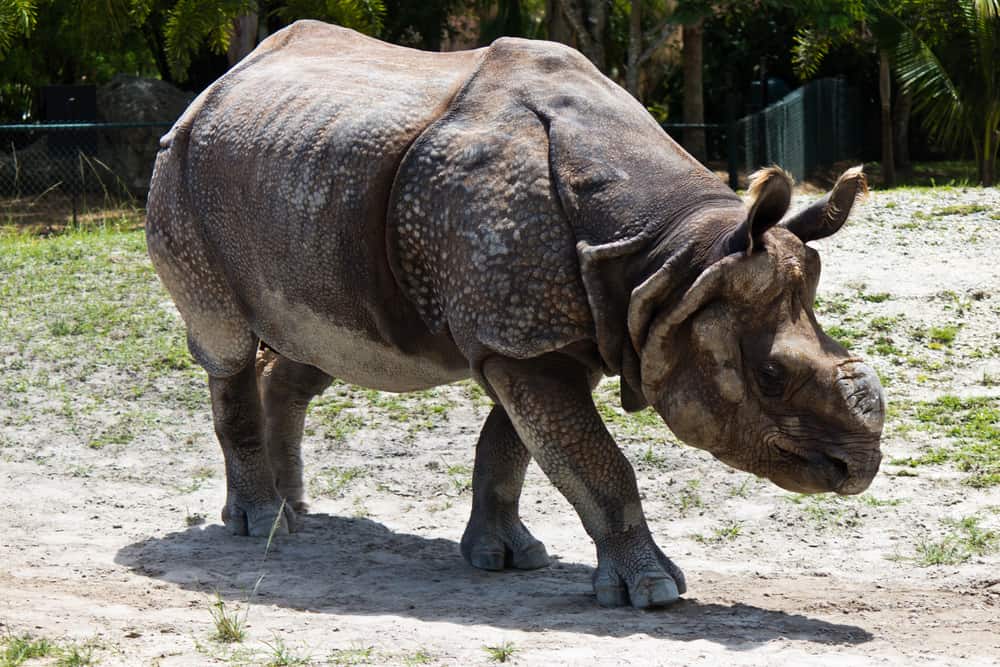
| Scientific Name | Rhinoceros sondaicus |
| Where It Lives | Indonesia |
| What It Eats | Leaves, twigs, fruit, shoots |
| Conservation Status | Critically Endangered (CR) according to the IUCN Red List |
Fun Fact: Poaching has reduced the Javan Rhinoceros population from thousands of animals in the wild to only 72 animals in a park.
The Javan Rhinoceros are only found in one area – the Ujung Kulon National Park in Java.
These rhinos were once abundant in the wild but today they are listed as critically endangered due to hunting and poaching for their horns. Unlike their African siblings who have two horns, only the males have one horn, while females do not even have a horn.
12. Jellyfish
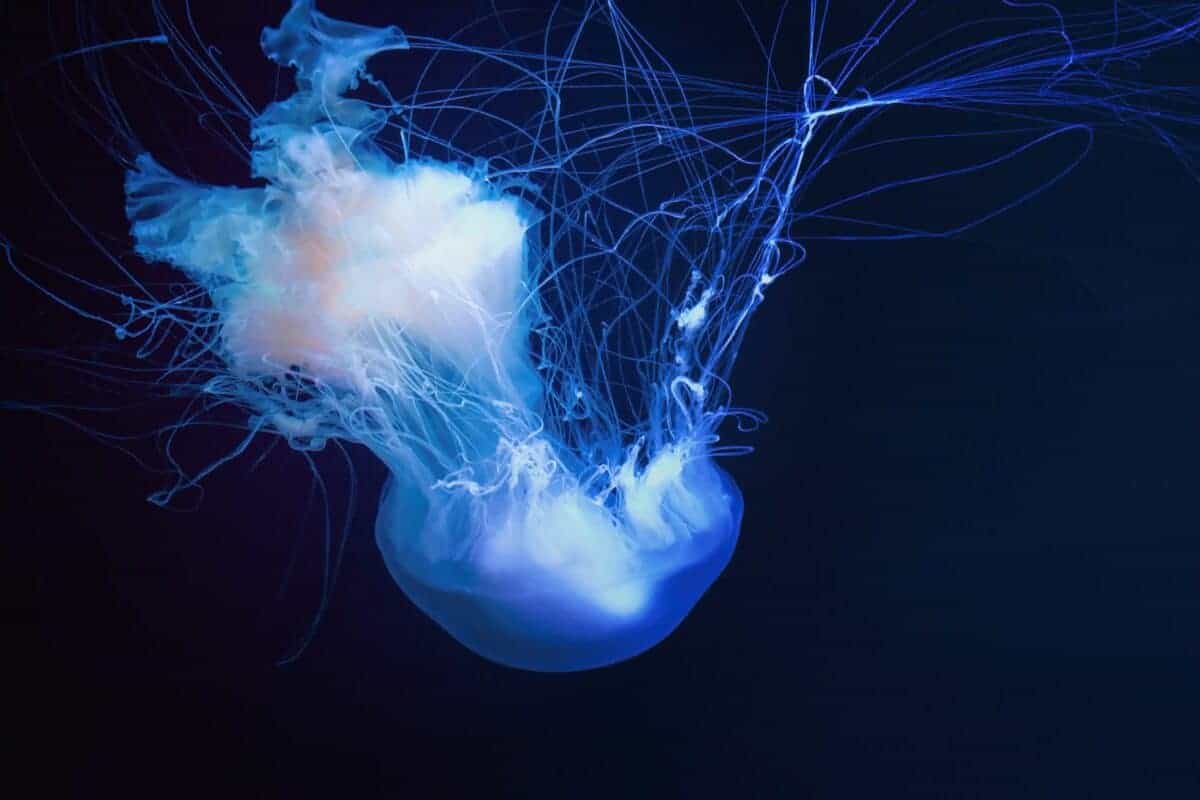
| Scientific Name | Scyphozoa |
| Where It Lives | Oceans |
| What It Eats | Fish, plants, fish eggs, larvae |
| Conservation Status | Least Concern (LC) according to the IUCN Red List |
Fun Fact: Jellyfish don’t have a brain.
Jellyfish live in all depths and oceans around the world.
Jellyfish are bioluminescent invertebrae without a brain! These tentacled creatures’ bodies are made up of mostly water and they lack most organs. Although they are known for their painful stings they are not aggressive, it is merely a self-defense mechanism!
13. Jerboa
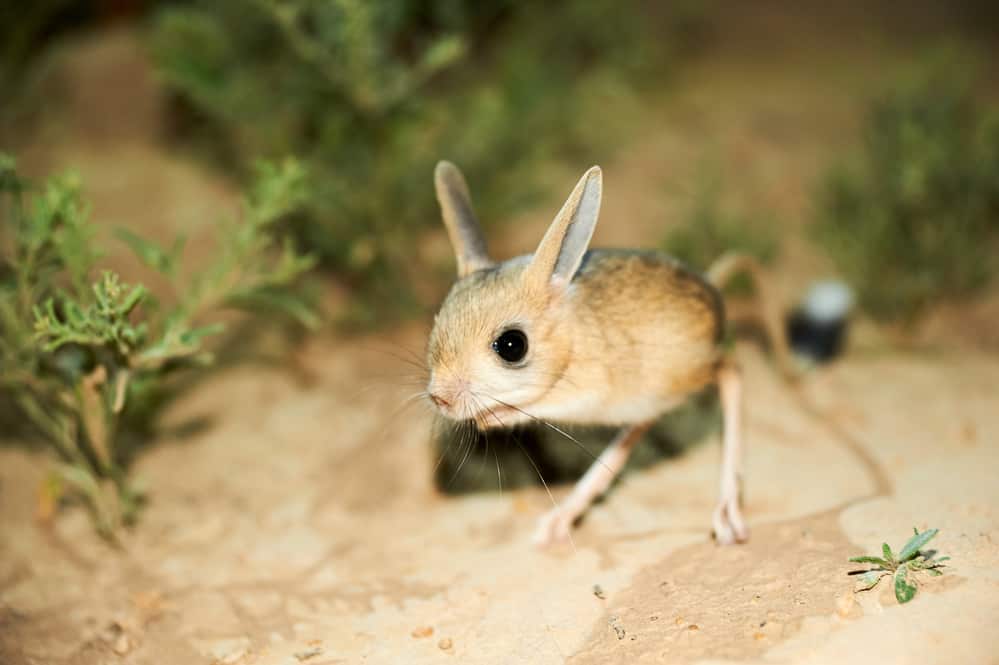
| Scientific Name | Dipodidae |
| Where It Lives | Africa, Asia |
| What It Eats | Plant material |
| Conservation Status | Least Concern (LC) according to the IUCN Red List |
Fun Fact: Jerboas don’t drink water at all.
The Jerboa, a small rodent, inhabits Northern Africa and Asia, mostly in deserts and steppe areas.
These tiny creatures’ tails are longer than their body and head combined. Their odd-looking legs also allow them to leap several feet at a time. They live in burrows where they can escape from their habitat’s heat and hide from predators.
14. Joro Spider
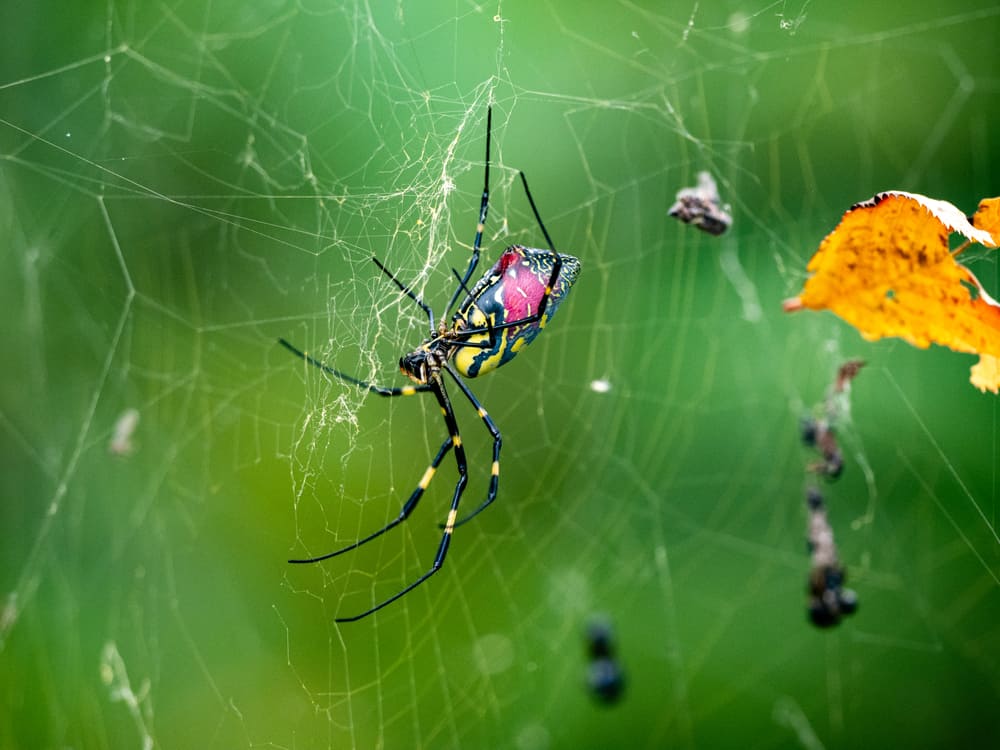
| Scientific Name | Trichonephila clavata |
| Where It Lives | Asia, United States |
| What It Eats | Insects |
| Conservation Status | Least Concern (LC) according to the IUCN Red List |
Fun Fact: Joro Spiders can travel up to a hundred miles while gliding on air currents in their webs.
The Joro Spider, native to Asia, now inhabits warm humid areas in the United States as well.
These scary-looking spiders are venomous but only pose a threat to people who are allergic to them. Joro Spiders sport impressive colors on their body, but these are mostly females. Males have plain and brown bodies. They received their name from a Japanese spider demon due to their fearsome appearance.
15. Jumping Spider
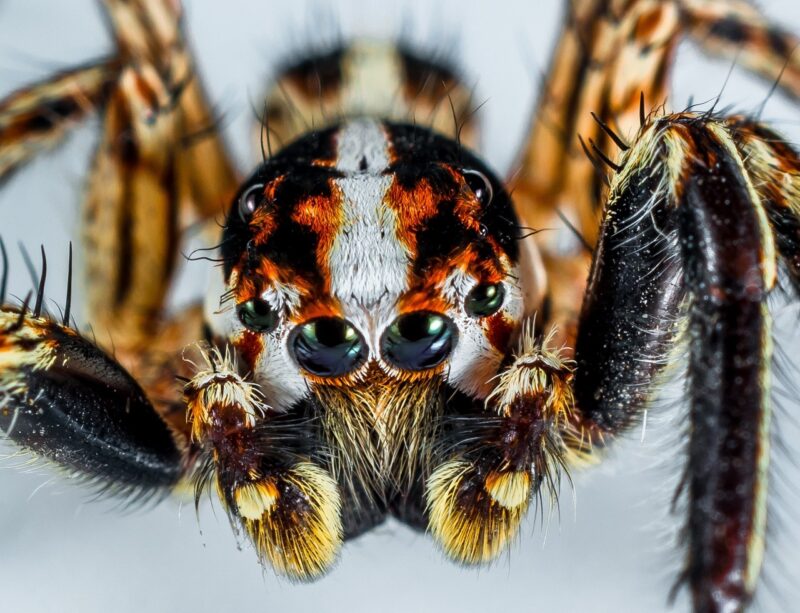
| Scientific Name | Salticidae |
| Where It Lives | Africa, Asia, Europe, Americas |
| What It Eats | Other spiders, lizards |
| Conservation Status | Vulnerable (VU) according to the IUCN Red List |
Fun Fact: Jumping Spiders can leap up to fifty times their body length.
Jumping spiders live in a wide variety of habitats, like tropical forests, deserts, scrublands, and mountains in Africa, the Americas, Asia, and Europe.
These creatures are aptly named for their behavior – they are spiders that jump. They are all relatively small, exhibiting a range of vivid colors and sizes, with even the largest species, Hyllus giganteus, being quite diminutive.
16. Jabiru

| Scientific Name | Jabiru mycteria |
| Where It Lives | Central America |
| What It Eats | Frogs, snakes, fish, snails, insects, invertebrae |
| Conservation Status | Least Concern (LC) according to the IUCN Red List |
Fun Fact: The Jabiru is the tallest flying bird in the Americas.
The Jabiru is a large stork that you can find in the Americas, where they live in wetlands, marshes, rice fields, and flooded areas.
These birds do not migrate and spend their days in their groups searching for food. When they come across their prey, they snatch it up with their long bills and throw their heads back to swallow. Their size is truly notable as they are the tallest flying bird with the second-largest wingspan in all of the Americas.
17. Javan Tree Shrew
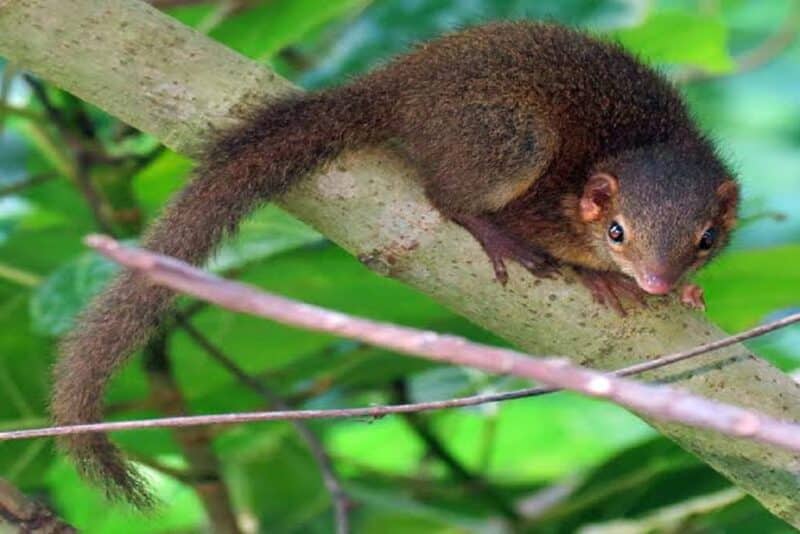
| Scientific Name | Tupaia javanica |
| Where It Lives | Indonesia |
| What It Eats | Fruits, insects |
| Conservation Status | Least Concern (LC) according to the IUCN Red List |
Fun Fact: The tail of this tiny animal can be longer than its body.
The Javan tree shrew, also known as the Horsfield’s tree shrew, lives in trees in forested areas in Indonesia.
These tiny animals mostly eat anthropods they find in their habitat, but do enjoy fruit too! And even though they are small, they have a significant impact on the ecosystem – they help control insect pests and spread seeds.
18. Javan Langur
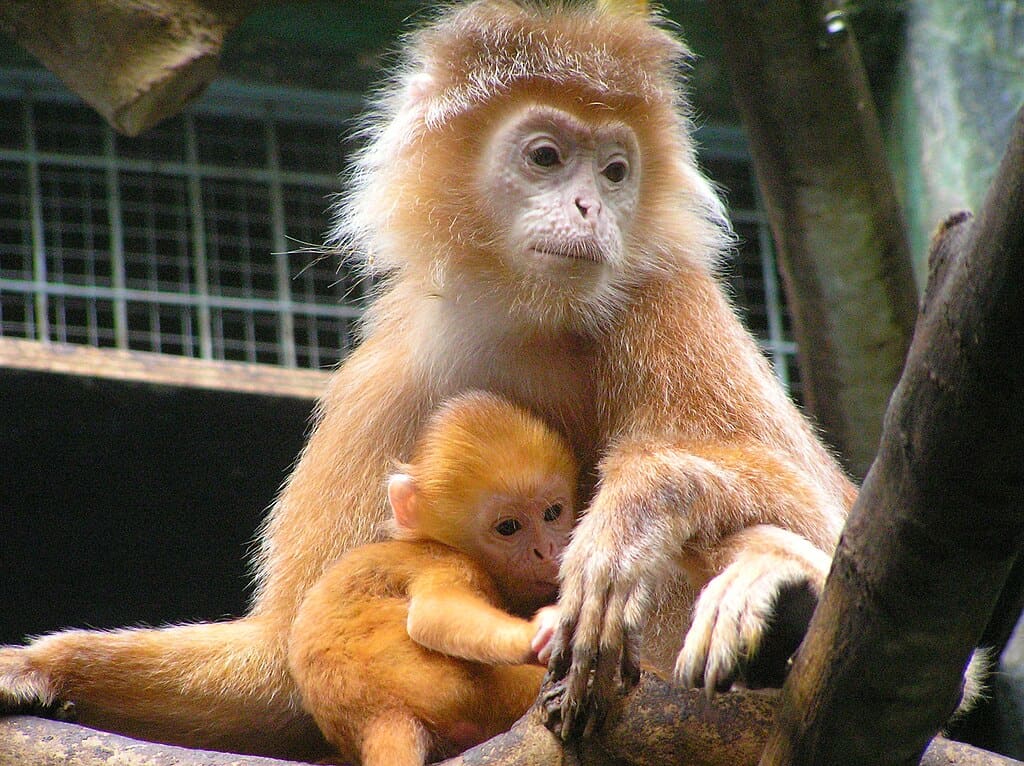
| Scientific Name | Trachypithecus auratus |
| Where It Lives | Indonesia |
| What It Eats | Leaves, fruit, flowers, larvae |
| Conservation Status | Vulnerable (VU) according to the IUCN Red List |
Fun Fact: Javan Langurs have a special stomach to digest plant material efficiently.
The Javan Langur, also known as the ebony lutung, inhabits rainforests on the islands of Indonesia.
These diurnal primates are very social animals and live in groups of about seven with one or two adult males. Mothers care for their offspring, as well as those of the other mothers in the group. However, they might get aggressive towards individuals from other groups.
19. Junco

| Scientific Name | Junco |
| Where It Lives | North America |
| What It Eats | Insects, seeds |
| Conservation Status | Endangered (EN) according to the IUCN Red List |
Fun Fact: What do you call a flock of Juncos? We’ll tell you – a blizzard.
You can find these tiny Junco in the temperate regions of North America and some parts of the Arctic.
They spend their breeding seasons in mixed forest areas throughout North America and migrate further south for the colder winter months. Spending most of their time in social groups foraging on the ground, these birds nest in well-hidden spots on the ground or in shrubs.
20. Javan Warty Pig

| Scientific Name | Sus verrucosus |
| Where It Lives | Indonesia |
| What It Eats | Grasses, leaves, insects |
| Conservation Status | Endangered (EN) according to the IUCN Red List |
Fun Fact: Male Javan pigs weigh about 108 kg when fully grown.
The Javan Warty Pig is native to the Indonesian islands of Java and Bawean, where they inhabit grasslands and secondary forests at elevations below 2,600 feet.
Living mostly solitary lives, small groups can be seen. These animals are mostly active and foraging during the night and startle quite easily. When this happens their mane stands upright and their tails curve upwards and towards their bodies.
Summary of Animals That Start With J
We hope you enjoyed this list of exciting animals and amazing fun facts on animals that start with the letter J. From the elegant Jacana to the fierce Jaguar, this list gives you an exciting array of animals that start with the letter ‘J. See you again, but check this list of animals that start with K before you leave.
See all Alphabetical Animals here:
- Animals That Start With A
- Animals That Start With B
- Animals That Start With C
- Animals That Start With D
- Animals That Start With E
- Animals That Start With F
- Animals That Start With G
- Animals That Start With H
- Animals That Start With I
- Animals That Start With K
- Animals That Start With L
- Animals That Start With M
- Animals That Start With N
- Animals That Start With O
- Animals That Start With P
- Animals That Start With Q
- Animals That Start With R
- Animals That Start With S
- Animals That Start With T
- Animals That Start With U
- Animals That Start With V
- Animals That Start With W
- Animals That Start With X
- Animals That Start With Y
- Animals That Start With Z
Thanks for reading. As my name also starts with J, I’m a fan of this 🙂
- Animals and Wildlife in the Bahamas - October 20, 2024
- Discover the Fascinating World of Long-Neck Dinosaurs - October 20, 2024
- Jurassic World Dominion Dinosaurs - October 20, 2024


